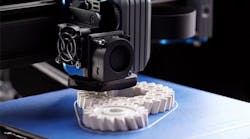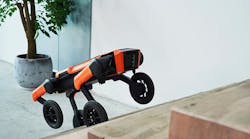There's no better time for embracing the Internet of Things. The basic technology building blocks are available, reliable, and proven. And the cost of components like sensors and processors continues to come down.
Yet many companies are struggling to realize a reasonable return on their efforts.
In fact, The McKinsey Global Institute, in its June 2015 report "Unlocking the potential of the Internet of Things," came to the damning conclusion that most of the data generated today around the Internet of Things go unused.
McKinsey authors pointed to the example of a typical oil rig that is equipped with 30,000 sensors, which are capable of producing as much as two terabytes of data per day. To put that into perspective, two terabytes of data is equivalent to approximately 170 million, single-page word documents.
A mere snippet (1%) of that information is actually used.
More in this case obviously isn't better, leading one to wonder why so much data is being collected in the first place.
Oil and gas industry consultants I have spoken with say that one of the major challenges—ironically—is the ease and relatively low cost of instrumenting operations today.
Sensors costing a mere penny each can unintentionally lead to a more profligate approach to data collection. After all, what's a little more data here and there if it seemingly doesn't cost anything to get it?
Dave Lafferty, an oil and gas industry consultant, and former BP manager who worked on some of the earliest digital oilfield initiatives, says that smart sensors—which have onboard computing and storage and communications capabilities—are transforming the automation world.
"Smart sensors today are just an incredible technology. They can help to optimize equipment performance, predict failures before they occur, detect and control abnormal conditions, and improve overall reliability," says Lafferty.
"But that's only assuming that companies are able to analyze this avalanche of new data and put it into an actionable form that solves a business problem."
In order to fully leverage the data that is produced by an Internet of Things initiative, Lafferty contends that companies need to put the effort in at the front-end to understand and document their basic work processes and identify where the best opportunities for real change and improvement lie.
People can tend to rush through or bypass this step because it's not the fun part of a project that involves all the shiny new technology.
But by putting in the initial slog, teams will be able to identify the real business issues and state clear and achievable goals for an Internet of Things project. "It's always better to err on the conservative and tackle a discrete problem that you can get your head around and achieve an early win with," says Lafferty.
And just because a project is focused doesn't automatically have to mean it will have a small impact. One such example in the oil and gas industry: The implementation of automated monitoring of steam traps has eliminated millions of dollars in lost energy costs. Not exactly chump change.
In contrast, Lafferty points out that he's seen big, unfocused IoT projects that sprawl out of control to the point that after years of trying the company involved has still not seen a penny of return on its investment.










